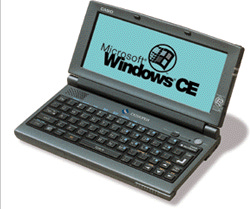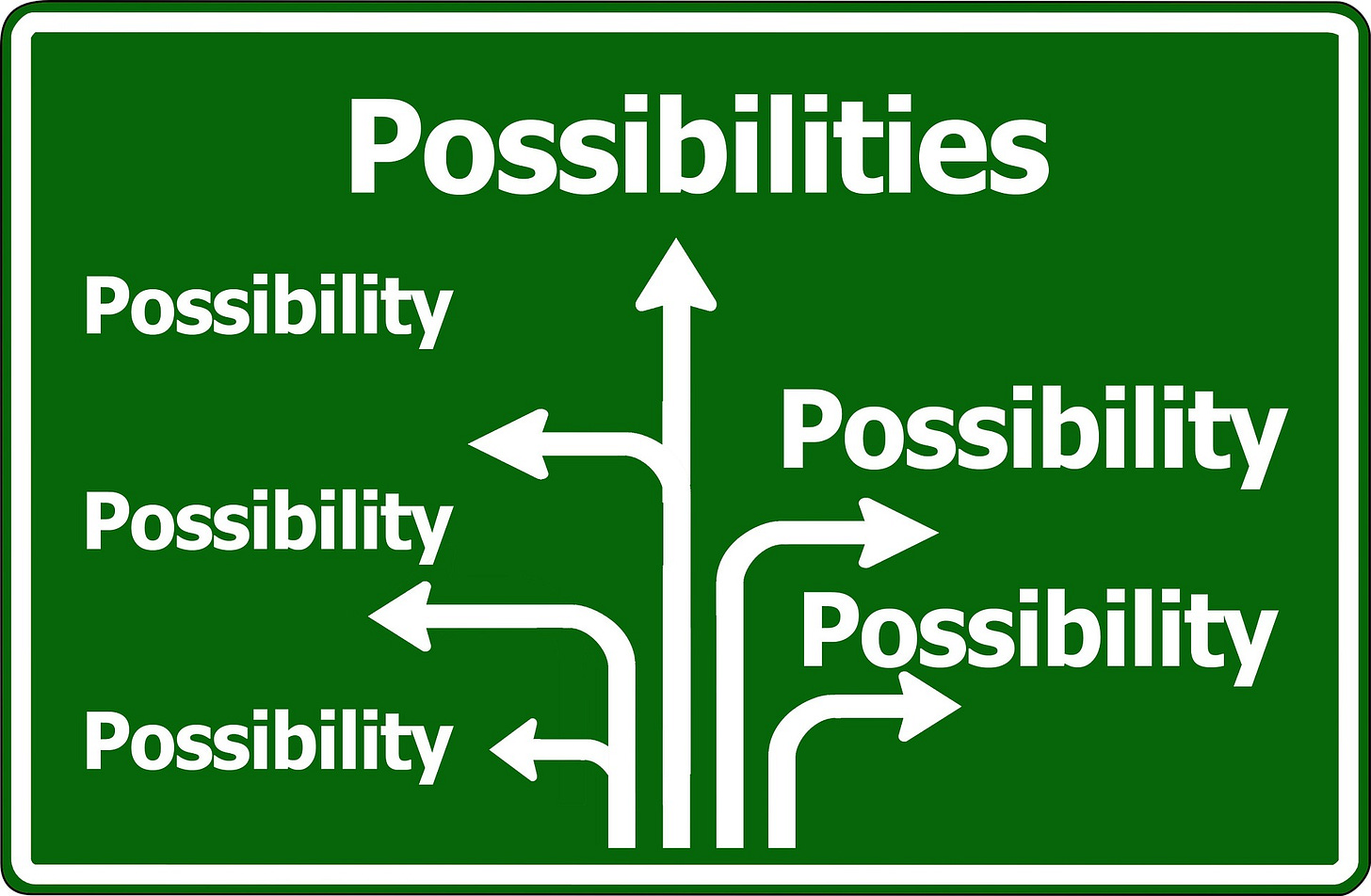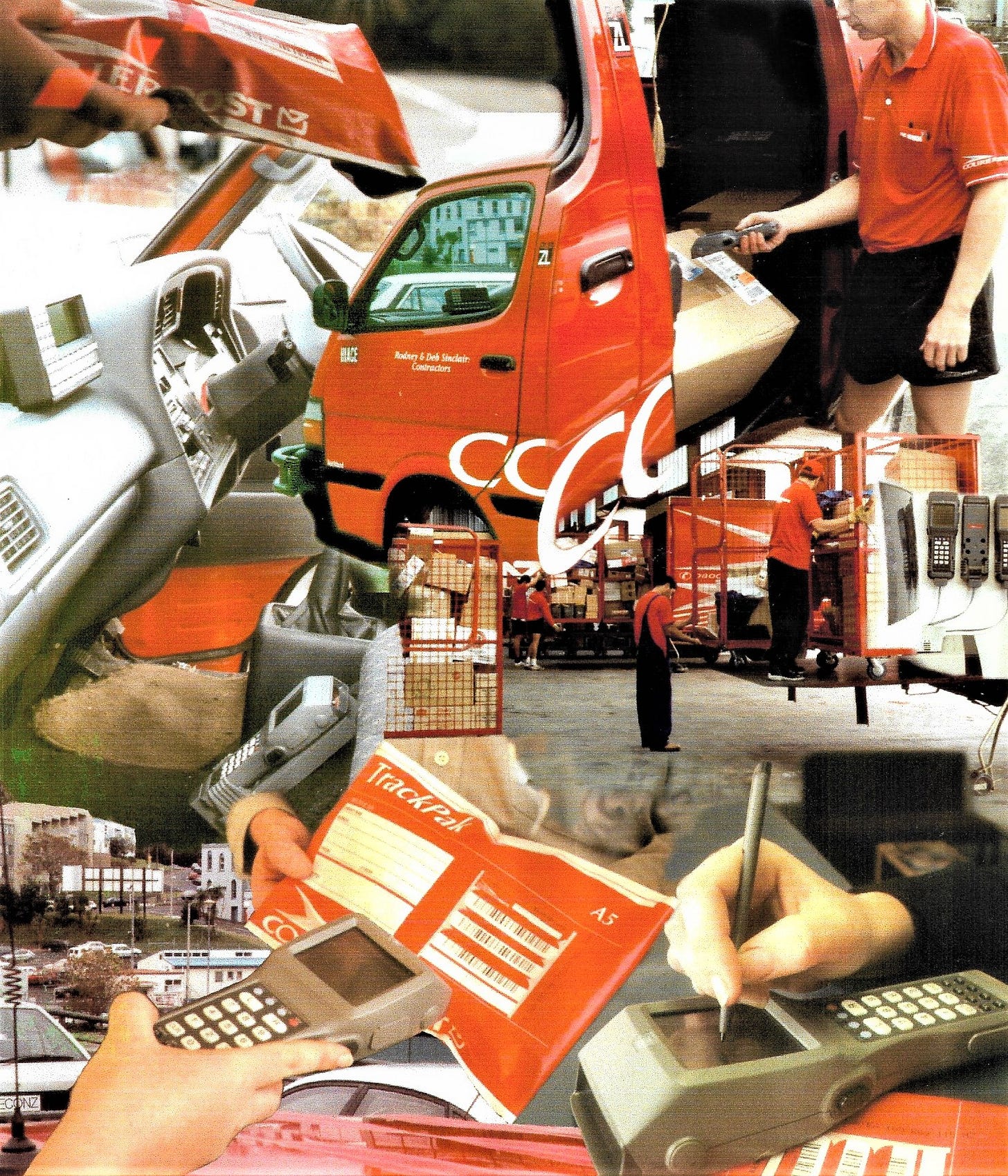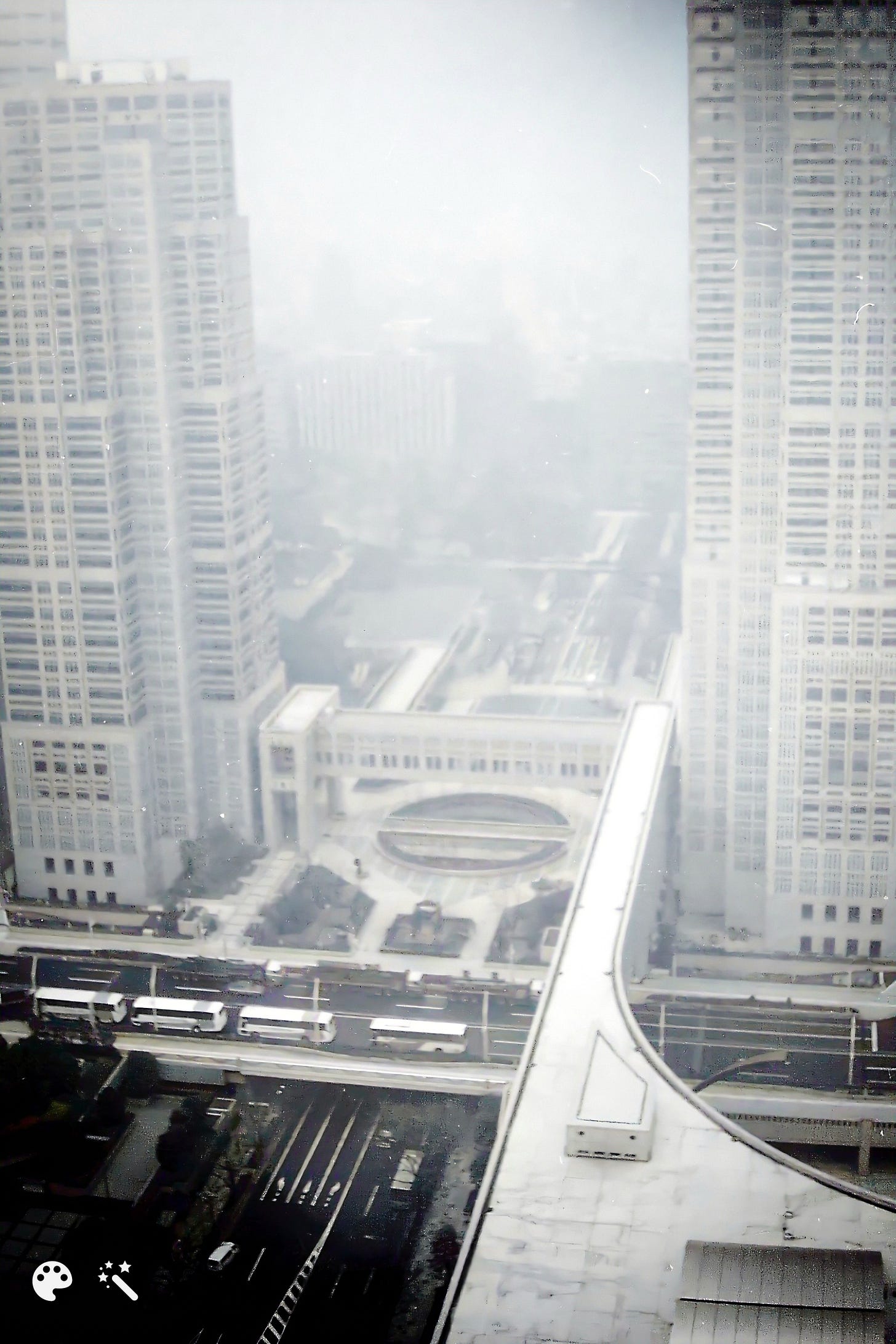Track and Trace Part Two - Saving a New Zealand Business Deal with Japanese Culture
When you learn a language, you learn about the people
A bit of history
In part one I talked about my dream to solve the problem of dealing with courier tickets and creating a mobile data solution when I was with Tait Electronics. I didn’t get anywhere at the time, as my Managing Director, AD McMurray, didn’t believe there was a market for it. I left soon after, and changed industries in order to pursue my leadership career path.
I entered the world of cash registers and scanning systems. I did really well and subsequently got headhunted a number of times, and in 1990, I arrived at Monaco Corporation as the new manager for ECR, Casio cash registers. Having recruited a great team, we built this into the most profitable side of the business, and it became the Systems Division.
I loved this role. It would rank as the job I have enjoyed the most in my career to date. I used to get up around 6 and be in the office reading the newspaper and solving the world’s problems with my friend and MD Nick van Dijk, a fellow Dutchman. I was one of the first to arrive in the morning and one of the last to leave in the evening, often going to work on a weekend to catch up after a trip. Sometimes I would bring my daughters in for a few hours and they enjoyed playing in our showrooms when nobody else was in our big building.
Each day was like another day in Paradise.
I travelled the world looking for products and brands to represent in New Zealand and Australia.
This was an exciting time when Windows CE gave birth to a wide range of handheld computers. These included the Cassiopeia.
It was a no-brainer, as it was a natural progression of the digital diary and the Casio Zoomer. I loved the concept of digital diaries and knew this was the precursor to the handheld computer. I still have my Zoomer, and it still works, when I put batteries in. Not bad for a device that is 30 years old! OK, the plastic is looking tired, but it was probably designed to last 5 years.
We were the exclusive distributor of everything Casio, with a responsibility to try to sell everything they created from watches and keyboards to digital cameras, data projectors to ‘Handy Terminals’ which they had been developing since 1985, largely for the domestic market. These were their first touch screen devices. In 1987 they added a laser bar code reader to the device, and in the mid-90s they had a device designed for the European market.
It had some basic functionality, like the bar code reader, it could capture an image and store it as a BMP, and it had communications capability.
An opportunity
At this time I was involved with a loose group of wireless computing enthusiasts and started shopping the device around to developers. A guy named Terry Stearns contacted me. He was with a company called ECONZ, which included a number of very clever people, like Vik Olliver, now an inventor in the 3D printing space, and Steve Sumner some of whom I am still in contact with from time to time.
Terry came to me with an NDA (confidentiality agreement) and it transpired that he had a prospect, a large courier company, looking to solve the very problem I was told there was no market for, by my Tait Electronics Managing Director, 10 years earlier.
Anyway, I’ll cut to the chase. ECONZ got busy with my hardware samples and developed a complex solution that was purchased by Courier Post, to be used by all of their couriers, for track and trace and proof of delivery. It had intelligent mobile communications, switching to the mode that had the best coverage and the least mobile data cost, in real-time, as couriers drove around the country. It included trunk radio (what I tried to get Taits to do), CDPD, and a mobile phone, at crazy slow data speeds. This system was to do all of the things that I wanted to do 10 years earlier. I was in like Flynn.
I went to the Casio R&D Centre in the busy city of Hamura, on the west of the Tokyo Metropolis, which has a population density of 5,500 people per square km! No wonder they have pod-style hotel rooms! I had discussions with the firmware team explaining details, such as bitmap files being too large for the capability of the telecommunications network, which they agreed to change.
We also had to meet a budget, and I had to push them for better pricing. This product hadn’t had a lot of success outside of Japan, at this time, so they needed success stories. They agreed based on minimum numbers and we were aiming for a few thousand, and I got us a very healthy profit margin.
We got the whole solution created, which took probably a year from start to delivery. It was a big job with multiple players.
Houston we have a problem!
It was at the launch to the couriers that things went south.
Courier Post decided to soft launch the product to the couriers in the city of Christchurch. They held a festive event to celebrate that their business was going to go digital and wireless. The first in their industry to come up with such a complete solution. With automated track and trace, customers could trace their own deliveries, no more stickers and paperwork for the couriers, which was going to give them at least 1-2 hours back a day, which could be converted into more work. They would be able to increase the number of deliveries, and therefore their income by something like 30%.
A little bit of history. In the past, the couriers were employees of New Zealand Post, a government department where everything was provided, and they got wages for their work. Now they were privatised and they got paid for results, which was good because the people who did the most work, got remunerated for it. Having worked in Telecom, when it was a subsidiary of NZPO, there were many people who made it a career goal to do as little work as possible for 40 years and retire.
Now, in the 90s these people were self-employed contractors. This came with many benefits, but Courier Post had decided that the couriers would have to pay for their Handy Terminals, and the system, with a monthly figure deducted from their fees.
This was like waving a red flag to a bull, kind of an appropriate metaphor, because some of those ex-union people, who loved the concept and the technology, baulked when they heard they were going to be paying for the hardware themselves, (just as they had to pay for their vehicles etc, I might add). To put it mildly, they turned the mood from a proud release event into something quite the opposite.
It reminds me of the Billy Bragg song, but these guys were better off and being self-employed, there was no union.
What Happened
Word got back to me the following day, from a very concerned Terry Stearns, that someone, an ex-union man had asked to see the device that they wanted so much money for. They proudly gave him a terminal to play with. He disappeared for a while, and then came back with the touch screen broken.
“I’m not paying for this piece of s**t"!” or somesuch words were shouted for all to hear. “I just pushed on the screen with my thumb and it shattered.”
The launch ended with a promise by management to check it out, and make sure they were fit for purpose.
The Courier Post project manager had told Terry that they had tried every which way, to reproduce what had happened, and could not break a single touch screen with their hands, no matter how hard they tried. It took a major whack with a hammer to break the thin but tough glass.
However, the insinuation was made, and they had a potential revolt on their hands instead of a celebration. They had been brainstorming and the only solution they could come up with was thicker touchscreen glass, or the deal would be off.
I got together with my boss Nick Van Dijk, and we also tried to break the screens, with our hands and fists. We pushed as hard as we could with our thumbs, to no avail. It would not break.
I spent the next few days talking to the export manager and others in Japan, saying that we had no other option but to provide them with a thicker touchscreen.
You may remember a previous post where I had gone to Japan and asked them to make their cash register software more user-friendly. Their response at first was “Rigi (They couldn’t pronounce my name, Luigi) You need to get better customers!” This discussion was pretty much the same.
There was no way they would be prepared to put thicker touchscreen glass on their terminals. As you know, the Japanese are wonderful engineers. Not only was I asking them to fix something that wasn’t broken, but even 2mm thicker glass would require re-engineering of the case, because it was built to exact tolerances, including specifications, such as a 1-meter drop to concrete.
I had to go back to ECONZ and talk to the team there, telling them that Casio would not do anything. Their response was, that while I had been a great partner, helping them with many firmware issues and great service, they would have to start all over again and find a new supplier of terminals. That was on a Thursday afternoon.
Friday morning, I waited for the time zones to align, and phoned Kimura San, my friend and associate in Casio Head Office, and said that we needed to fix this. If we got this contract (which was worth millions of dollars), they would have a terminal suitable for other countries as well.
He told me he was very sorry, he understood the situation, but his hands were tied behind his back. Kimura San, loved our sayings, such as ‘a sandwich short of a picnic’, or ‘a roo loose in the top paddock’, He didn’t always get them exactly right.
What I did.
With my understanding of aspects of Japanese culture, I understood the concept of ‘Face’ or Mentsu. It is something very important to them. You will have heard of seppuku, or ritual suicide, once a proud samurai tradition. You may have heard of company managers committing suicide when they feel they have brought shame to their business (even if they were not personally responsible). It’s serious.
I rang my travel agent and booked a flight to Tokyo for Saturday, and sent an email to Kimura San telling him I would be in his office at 9 am, on Monday morning to sort this out. I told him I was not going to lose this order and lose face for us, Casio or Monaco, or our reseller, who had committed a year to the success of this project.
I got a message from him saying I should not come.
Monday morning, I rang Kimura San from my room in the Tokyo Hilton and told him I was coming in. He sighed and said, “I will see you soon.”
By the time I got there, he had assembled a few senior managers and we started off with a cup of tea and as much pleasantry as possible when they were feeling like a fiery Orochi.
They knew the story, but I had planned how the discussion would go on the plane. I would tell them how great their product was, what they had developed, and how proud I had been to be able to offer it to the biggest courier company in New Zealand.
I talked about the effort of their firmware team, and the improvements we had been able to make together, to compensate for the mobile data technologies of the day, and were now able to send signatures and other data via a variety of technologies. I showed them images of the devices being used, scanning courier parcels, and expounded that this successful solution would attract media attention and as with other projects I had completed, that was good for Casio’s reputation and competitive position.
I reiterated and acknowledged that there was nothing wrong with the product and that their hardware design was fit for purpose. However, we had to work together to show that something had been done, despite the fact that it was already an excellent product.
We travelled to Hamura together on the train and met with design people the next day. We started with lunch in the staff cafeteria (great food!), following a protocol that the Italians would be proud of. “First, we eat, then we talk business, capiche?”
The design engineers confirmed that it was possible to change the touchscreen glass thickness from 3mm to 5mm, although this would come at a cost. It wasn’t just a matter of putting in a different glass. The good news was that these devices were made to order, so they would not have to modify the existing product.
Who would pay for the design changes? The Japanese are great negotiators and love their pregnant pauses. I had been well trained, including maintaining silence for 5 minutes! Try it sometime in an argument, while facing your opponent.
I explained that we had cut our margins to win this business (from 40% to 30% plus over cost) and there was no room to move. I then said, what if I could get them to agree to minimum quantities? We had started off talking about an initial order of 200 units, but I knew the need was for around 2,000.
They told me they would need a commitment for 1,000 units, being 5 times more than my initial order. I looked appropriately worried and said I would call my customer in New Zealand the following morning and see what I could negotiate. We took the train back to Shinjuku station and for the first time, I was not invited out for an evening meal after work. They were showing me their displeasure.
The outcome
I didn’t actually need to ring New Zealand, but I did, to complete the ceremony. There was a 3-hour time difference, so I had arranged to meet again in the early afternoon at the Sumitomo building, which was Casio’s Tokyo office.
I sat down after our cup of tea and explained grimly that it had taken a lot of discussions, but that in acknowledging that they were grateful for Casio making changes to a product that had nothing wrong with it, they were prepared to give me a purchase order for 1,000 units to be delivered over the next 12 months. Casio wanted to see the order, but I didn’t want them to see my margins, so instead, I gave them my purchase order and a forecast of another 1,000 units the following year.
It was agreed, and it saved the day. Courier post was the first in New Zealand with a sophisticated system including handheld computers, wireless data, and signature capture, their service levels were significantly improved, and the couriers were indeed able to make a lot more money in the same amount of time.
I had told Casio that this would be a great case study for them (not so much the Christchurch experience, but they also had that up their sleeves). Overseas courier companies visited New Zealand to view the system.
Casio subsequently made sales of tens of thousands of these devices, including kitting out all of Korea Post and then German Post couriers. A fitting Return on Investment for them, on coming to the party.
None of this would have been possible if I hadn’t gone to night school to learn the Japanese language and with it a primer on culture, which I continued to study with books I purchased in Japan. Rather than pushing American bully-type negotiation tactics, I used their methodology and was good for my word on the business we generated.
We saved face and ate at the most expensive Shabu Shabu restaurant in Tokyo. All was forgiven.







